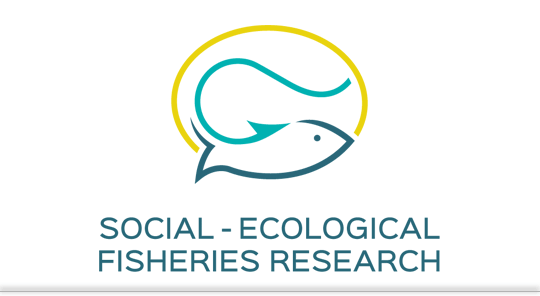Research has shown that intensive size selective harvesting in fisheries is an evolutionary driving force (Heino et al. 2015; Sbragaglia et al. 2022). Fish in exploited populations might be selected for specific traits and therefore, fishing has the potential to alter fish populations (Heino et al. 2015). Commercial fisheries usually target the larger fish thereby sparing the smaller fish that can reproduce. Predators on the other hand might target smaller fish, as they provide an easy access to energy due to lower swimming speed (Sogard 1997). Selection for small body-types (by harvesting the larger individuals) has proven to lead to a fast life history, which is associated with earlier maturation at smaller size, increased reproductive investment and reduced post-maturation growth (Heino et al. 2015). Further, size selective harvesting has the potential to foster changes in behaviour, resulting in exploited populations to show more vigilance and increased timidity, called timidity syndrome (see Arlinghaus et al. 2017).
In this experiment, I studied how large - and small size-selective harvesting can affect vulnerability to trawling using three artificially selected lines of zebrafish, Danio rerio. These fish have been selected and housed for several years in the laboratory following the procedure explained in the methods. The large harvested line (i.e., where smaller fish survived) evolved a fast life history characterised by the traits explained above (Uusi-Heikkilä 2015, 2016, 2017). Several experiments carried out on these lines, showed the following tendencies: the small harvested (large) line has been shown to be consistently bolder (Roy and Arlinghaus 2022). The small harvested line has been shown to be more bold (Roy et al. 2023; Sbragaglia et al. 2022) and tends to form more cohesive groups (Sbragaglia et al. 2022). The large harvested line (small) showed tendencies of shy behaviour (Roy and Arlinghaus 2022, Sbragaglia et al. 2021), formed less cohesive shoals (Sbragaglia et al. 2022) and showed slower learning abilities (Roy et al. 2023).
A previous modelling study by Sbragaglia et al. (2022) predicted mortality outcomes for these lines when faced with natural and artificial predators (i.e., fishing gears). The authors predicted that the small line fish will have reduced trawl induced mortality while the large fish will have increased trawl induced mortality compared to the control line. In this study, I tested these model predictions using the three selection lines of zebrafish. Trawling is expected to select on fish behaviour (Crespel et al. 2021). For this experiment a model had to be developed that mimicked commercial continuous trawling. The target species in this case were three lines of size selected zebrafish (Danio rerio). The model was designed in a way so that the net was continually chasing the fish, allowing them several escape routes. Fish behaviour during the trawl movement and during an estimated resting phase afterwards and the time taken by every individual to leave the net after it was caught were scored. A vulnerability index (Thambithurai et al. 2022) was estimated and used to evaluate differences in vulnerability of the specific lines towards the trawl.
Based on the results obtained from mathematical models and past experiments mentioned above, I expect (i) the small line to be less vulnerable towards trawling compared to the control, because they tend to form less cohesive shoals (Sbragaglia et al. 2022). Further, I expect (ii) the large line to be more vulnerable towards trawling, because they form more cohesive shoals (Sbragaglia et al. 2022). A change in vulnerability across trials can be expected due to learning, but this would be less in the small line than the large line as the former showed reduced collective learning ability (Roy et al. 2023). And lastly, I expect (iii) a decrease in time taken to escape the net, especially for the large line as they tend to form less cohesive shoals and might find escape routes quicker because they might be more distributed (Sbragaglia et al. 2022).

